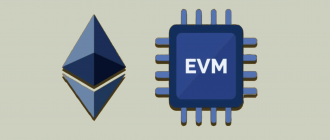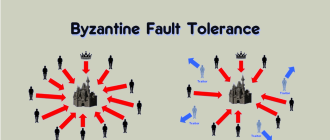Proof of Stake (PoS) represents a cutting-edge technology in the blockchain sphere that enables network consensus without the need for the intensive computations typical of Proof of Work systems. Based on the principle of “staking” a portion of assets, PoS allows participants to influence network operations in proportion to their stake. This approach not only enhances energy efficiency but also broadens participation in the mining and block addition processes.

The Evolution of Proof of Stake
Introduced in 2011, PoS was proposed as an energy-efficient alternative to the Proof of Work (PoW) method. One of the earliest significant projects to implement PoS was Peercoin, launched in 2012. This project combined PoW and PoS, introducing the concept of coin age to increase the chances of forming blocks and enhancing network security.
In 2014, the Nxt project debuted, fully based on PoS, eliminating the need for mining and transitioning to staking. A major development in PoS came with the announcement of Ethereum’s switch to PoS, aimed at improving scalability and energy efficiency.
Over the past decade, PoS has evolved from a concept to a key technology in the blockchain industry, facilitating the development of more sustainable and accessible network structures.
How Proof of Stake Works
The Proof of Stake mechanism involves a process where the creator of the next block is chosen based on the amount of tokens they hold and the duration of ownership. Participants in a PoS blockchain who wish to engage in the block validation process must lock a certain amount of their tokens as a “stake.” This stake acts as a guarantee of their honesty, as any fraudulent actions or attacks on the network can lead to the forfeiture of their stake.
Validator Selection Algorithm
Unlike PoW, where computational contests dominate, PoS does not involve such competitions. Instead, validators are selected based on a combination of randomness and the size of their stakes multiplied by the duration of token ownership (coin age). The system may consider additional factors such as the overall period of participation in the network or a history of previous contributions. Some systems include mechanisms to ensure a more equitable distribution of validation opportunities among participants.
Block Creation Process
Once a validator is chosen, they verify transactions according to network rules and compile a new block. This block is then disseminated among other network participants, who must verify and approve it. Upon confirmation, the block is added to the blockchain.
Security and Motivation
Validators receive rewards in the form of transaction fees and, in some cases, new coins, which motivate them to operate honestly within the network. If fraudulent activities are detected, validators risk losing their stake, serving as a deterrent against dishonest behavior.
Long-term Decentralization and Sustainability
PoS is designed to make the network more resistant to centralization, as owning a large number of tokens without corresponding contributions to the network becomes less advantageous over time. This encourages the distribution of block creation opportunities among a greater number of participants, enhancing overall network security.
Each blockchain platform using PoS can vary these mechanisms based on its unique requirements and goals, allowing for tailored levels of security, transaction speed, and decentralization.
Equipment and Participant Roles in Proof of Stake
In the architecture of Proof of Stake (PoS), unlike Proof of Work (PoW), the hardware requirements are minimal, emphasizing the key roles played by validators and nominators. This lowers the barrier to entry and increases the energy efficiency of the blockchain. Validators use staked tokens to create blocks, while nominators delegate their tokens to validators, increasing their chances of being chosen and earning a portion of the rewards. This system enhances both the security and decentralization of the network.
Equipment for Proof of Stake Mining
Participation in the Proof of Stake mechanism requires significantly less specialized equipment compared to Proof of Work. Instead of powerful processors and graphics cards, the main hardware requirements for PoS are related to the reliability and stability of the system. Validators need to ensure continuous internet connectivity and uninterrupted computer operation, as their task is to constantly maintain synchronization with the blockchain and participate in consensus processes. A good choice could be the use of dedicated servers or cloud platforms, which can guarantee high availability and protection against technical failures.
Validators and Nominators
In PoS systems, validators are participants who freeze their tokens as a stake and engage in the process of block creation and maintaining network security. They are responsible for validating transactions and creating new blocks, and in cases of fraudulent actions, they can lose their stake as punishment. Nominators, on the other hand, support the network by delegating their tokens to chosen validators. This allows users who do not have sufficient resources or the desire to directly participate in validation processes to still contribute to the security and stability of the network. Nominators receive a portion of the rewards generated by their validators, making staking an attractive investment method.
Overview of Staking in PoS
Staking in Proof of Stake (PoS) starts with selecting a cryptocurrency and a platform that supports the PoS mechanism. Users move their tokens into specialized staking accounts on a blockchain platform, where these tokens are then frozen and used to sustain the network. A critical part of this process is choosing reliable and effective validators because the security of invested funds and the amount of rewards received depend significantly on their actions.
How Staking Works
Once tokens are delegated to a validator, the staking process begins. Validators participate in the consensus process, and if a validator successfully creates a block and it is verified by other network participants, nominators (those who have staked their tokens with the validator) receive a portion of the rewards. These rewards are distributed proportionally based on their share in the total stake committed to the validator. This operation is automated, thanks to smart contracts or built-in mechanisms of the platform.
Choosing the Right Validators
Selecting effective validators is essential because a validator’s ability to accurately and efficiently create and verify blocks directly affects the rewards that stakers receive. Stakeholders should consider the validators’ past performance, their reliability, and the technological and operational security they offer. This due diligence helps in safeguarding staked assets and optimizing reward potential.
Benefits of Staking
Staking in PoS not only enhances the security and stability of the blockchain but also offers participants the opportunity to earn passive income based on their level of involvement in the network’s activities. This system incentivizes token holders to contribute to the network’s health, leading to a more decentralized and robust blockchain infrastructure.
The Role of Smart Contracts and Automation
The use of smart contracts or automated platform features in PoS ensures that the staking process is transparent and efficient. These technologies facilitate the seamless transfer of rewards and empower users by automating the technical aspects of staking, allowing them to focus more on strategic decisions like selecting the right validators.
Variations of Proof of Stake Consensus
Proof of Stake (PoS) encompasses several unique modifications, each offering different mechanisms for achieving consensus and managing network security. Here are some of the most notable variations:
Delegated Proof of Stake (DPoS)
In DPoS, network participants vote for a small number of delegates (validators) who are responsible for validating blocks and managing the network. This allows for higher performance and scalability. Popular examples include EOS and Tron, where delegate elections occur dynamically, enabling token holders to participate directly in network governance.
Leased Proof of Stake (LPoS)
LPoS allows token holders to lease their stakes to other users who then participate in the block creation process. This increases the number of active participants in validation without requiring token holders to be actively involved. An example of this system is Waves, where users can lease their tokens to validators to participate in block generation.
Adaptive Proof of Stake (APoS)
In this variant, the algorithm adapts based on the current state of the network to optimize performance and security. This could include adjusting rewards, staking requirements, and other parameters in real-time to maintain network stability and efficiency. While not widely implemented, APoS is a topic of interest in academic and research circles.
Proof of Stake-Velocity (PoSV)
Developed for the cryptocurrency Reddcoin, PoSV adds a “velocity” factor, considering not only the stake ownership but also the frequency of transactions a user performs. This is designed to encourage active use of the currency rather than merely hoarding it.
Casper the Friendly Finality Gadget (FFG)
Casper FFG, developed for Ethereum, is a hybrid PoW/PoS system where blocks are first mined using PoW and then finalized through a PoS mechanism. This allows combining the security benefits of PoW with the energy efficiency and scalability of PoS.
Projects Utilizing PoS
Many modern blockchain projects utilize Proof of Stake, attracting attention with their unique solutions and adaptations of the classic PoS model. Here are some notable examples:
- Ethereum (ETH): Ethereum has transitioned to PoS in an upgrade known as Ethereum 2.0, aiming to improve scalability and energy efficiency. Instead of mining, users can now participate in network support through staking ETH, contributing to the overall security and stability of the platform.
- Cardano (ADA): Developed with a focus on research and academic rigor, Cardano uses a unique variant of PoS called Ouroboros. This system ensures a high level of security and energy efficiency, allowing ADA holders to participate in network operations.
- Tezos (XTZ): Tezos employs a PoS algorithm that enables token holders to participate in governance and network updates, enhancing decentralization and flexibility. The staking system in Tezos is referred to as “baking,” where users “bake” blocks by participating in the validation process.
- Polkadot (DOT): Designed to support interchain data and asset transfers, Polkadot uses a variation of PoS that facilitates secure and efficient transaction processing among different blockchains. This encourages participants to actively engage and maintain network operations.
- Algorand (ALGO): Algorand utilizes Pure Proof of Stake (PPoS), where network security is ensured by randomly selecting validators from the pool of users staking ALGO. This model promotes broad distribution and participation, minimizing the potential for centralized power.
These projects demonstrate the diversity of approaches to using PoS, each contributing to the evolution of blockchain technology and offering unique mechanisms for ensuring network security and community participation.
Advantages and Disadvantages of Proof of Stake (PoS)
Advantages of Proof of Stake
- Energy Efficiency: PoS significantly reduces energy consumption compared to PoW since it does not require intensive computational operations for mining blocks.
- Security through Staking: Participants are motivated to maintain network security because any attempts to compromise the network can lead to the loss of their stakes.
- Reduced Mining Centralization: Unlike PoW, where large mining farms dominate, PoS allows a more equitable distribution of block generation capabilities among users.
- Scalability: PoS systems often can handle more transactions per second due to more efficient validation algorithms.
Disadvantages of Proof of Stake
- “Nothing at Stake” Problem: In PoS, there’s no incentive to avoid supporting multiple blockchain forks since doing so doesn’t require additional resources, potentially leading to security risks.
- Potential for Centralization: Large token holders can exert disproportionately large influence over the network, increasing the risks of centralization of power.
- Limited Participation: In the early stages of a network or when tokens are costly, participation can be limited, creating barriers for new users.
- Difficulty in Validator Selection: The process of random validator selection and ensuring their honesty can be challenging to monitor and might lead to vulnerabilities.
Conclusion
Proof of Stake has established itself as a significantly more energy-efficient and potentially safer alternative to the traditional Proof of Work mechanism. It enables blockchain communities to achieve scalability and decentralization without excessive resource consumption. Despite certain technical and security challenges, PoS continues to evolve, offering new solutions for enhancing stability and participation in network operations. Looking ahead, PoS could become a key driver in the evolution of blockchain technologies, facilitating the creation of more sustainable and accessible financial systems.
Exploring and mitigating the disadvantages of PoS is critically important for further development and widespread adoption of this consensus method in the blockchain community. As PoS evolves, it promises to address these challenges, potentially leading to greater security and efficiency in blockchain networks.







